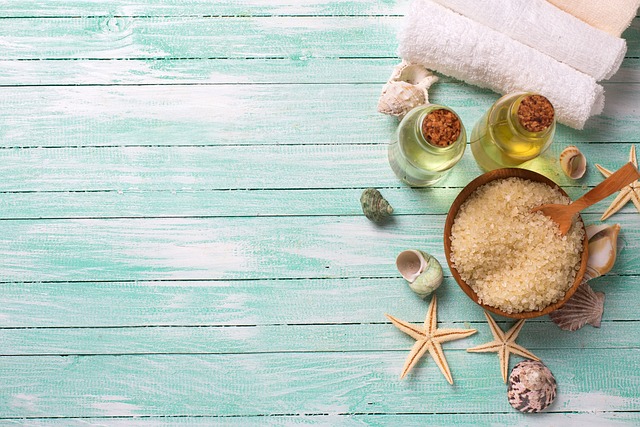Cold plunge therapy, an ancient practice gaining modern popularity, involves immersing oneself in water below 59°F for various health benefits. While it boosts metabolism, reduces pain, and supports muscle recovery, it also carries risks like hypothermia, especially for those with certain medical conditions. A growing trend shifts towards natural cold water sources for a deeper connection with nature, offering varied temperatures and landscapes. Safety measures include personalized approaches, access to warm spaces, and recognizing overexposure signs, ensuring a safe and beneficial practice for overall wellness.
Discover the transformative power of cold water immersion with our comprehensive guide to various techniques, including ice baths and natural alternatives. Explore the benefits and mechanisms behind cold plunge therapy, from accelerated recovery to improved circulation. We break down the pros and cons of ice baths, offer safe exploration tips for natural cold water sources, and emphasize a personalized approach tailored to your needs.
Understanding Cold Water Immersion: Benefits and Mechanisms
Cold water immersion, a practice often referred to as cold plunge therapy, involves submerging oneself in cold water, typically below 59°F (15°C), for a short period. This ancient technique has gained modern popularity due to its purported health benefits and ability to stimulate various physiological responses. The mechanism behind these effects is multifaceted. Cold shock triggers the release of norepinephrine, a hormone that prepares the body for physical activity, increasing heart rate and metabolic rate. It also stimulates the release of endorphins, often referred to as “feel-good” hormones, which can reduce pain perception and promote relaxation.
Additionally, cold water immersion is known to enhance blood flow by causing vasoconstriction (narrowing of blood vessels) followed by rapid vasodilation (widening), improving oxygen and nutrient delivery to tissues. This process supports muscle recovery after exercise and may aid in reducing inflammation. Moreover, the stress response triggered by cold exposure can boost the immune system, making it a potential tool for overall wellness and disease prevention.
The Rise of Ice Baths: Pros, Cons, and Popular Techniques
In recent years, ice baths have emerged as a popular wellness trend, gaining significant traction in the world of fitness and cold plunge therapy. This extreme form of cold water immersion involves submerging oneself in an ice-cold bath, typically for short periods, to achieve various health benefits. Proponents of ice baths claim they can enhance recovery after intense workouts, reduce muscle soreness, improve circulation, and even boost the immune system. The rise of ice baths can be attributed to their perceived effectiveness in accelerating post-exercise recovery and promoting overall well-being.
However, despite its growing popularity, ice bathing is not without controversies. Critics argue that prolonged exposure to extreme cold can lead to hypothermia, especially for individuals with cardiovascular issues or a lack of acclimatization. Moreover, the harsh temperature change might cause shock to the body, potentially resulting in adverse effects like increased heart rate and blood pressure. Despite these cons, many enthusiasts advocate for gradual acclimatization techniques, such as starting with warm water soaks before transitioning to colder temperatures, to minimize risks associated with ice baths.
Natural Cold Water Sources: Exploring Alternative Immersion Methods
Cold water immersion is an ancient practice, but modern trends have seen a surge in popularity for alternative methods beyond traditional ice baths. Exploring natural cold water sources offers a diverse range of experiences, from refreshing mountain streams to rejuvenating glacial lakes. These settings provide a more immersive and sensory experience, connecting individuals with nature while still reaping the benefits of cold plunge therapy.
Compared to structured ice baths, natural sources encourage a deeper connection with the environment, fostering a sense of calm and tranquility. Variations in water temperature, current, and surrounding scenery create unique challenges and stimuli for the body, potentially enhancing the therapeutic effects. This approach allows individuals to embrace a more organic form of cold therapy while enjoying the beauty of the natural world.
Safety Considerations and Individualized Approach to Cold Plunge Therapy
Cold plunge therapy, whether through ice baths or natural water sources, offers numerous health benefits, but safety is paramount. Both methods involve rapid temperature changes, which can be intense for the body. Therefore, individuals with certain medical conditions like heart problems, high blood pressure, or Raynaud’s disease should consult a doctor before attempting cold immersion. Hypothermia and shock are potential risks, especially if the water is unusually cold or the individual stays in the plunge for extended periods.
A personalized approach is crucial to safe and effective cold plunge therapy. This includes considering age, fitness level, and tolerance to cold. Beginners should start with shorter durations and gradually increase immersion time. Access to warm clothing and a warm space afterward is essential for recovery. Additionally, knowing how to recognize and respond to signs of overexposure, such as shivering or numbness, is vital. Customizing the experience based on individual needs ensures that cold plunge therapy becomes a beneficial practice rather than a hazardous one.
Cold water immersion, whether through ice baths or natural sources, offers a range of health benefits as part of a holistic approach known as cold plunge therapy. While ice baths provide rapid stimulation and are easily accessible, natural methods offer unique experiences with varying temperature profiles. Safety is paramount; individuals should always consider their tolerance and consult professionals before attempting any cold immersion technique. Ultimately, both approaches can enhance recovery, reduce inflammation, and boost overall well-being when incorporated into a balanced lifestyle.
